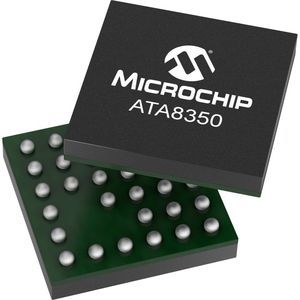
- Products
- Catalogs
- News & Trends
- Exhibitions
Programmable microchip

Add to favorites
Compare this product
Characteristics
- Options
- programmable
Description
New I2C Serial EEPROM Introduces 3.4MHz High-Speed Mode Operation, Software Write-Protection and Factory Programmed Serial Numbers
Industry First 3.4 MHz I2C Serial EEPROM Closes the Gap in Trade-Offs Between SPI and I2C Protocols
CHANDLER, Ariz., August 12, 2021 — I2C and SPI are two of the most widely used serial communication buses for embedded systems and each comes with its own set of advantages and disadvantages. SPI is by nature the faster protocol, but that comes at the expense of higher pricing and limited scalability. To close the trade-off gap between I2C and SPI in Serial EEPROMs, Microchip Technology Inc. (Nasdaq: MCHP) has released the first commercially available I2C Serial EEPROM with support for 3.4 Mbit/s data rates, the 24CS512, making it the fastest I2C EEPROM in the world.
Until now, I2C Serial EEPROM bus speeds have been limited to 1 MHz, which is sometimes not fast enough, particularly for larger memory size applications. Engineers requiring faster speeds out of their Serial EEPROMs usually choose SPI, which is typically specified for up to 20 MHz speeds. However, they have paid approximately 30 percent higher prices for the added speed while making additional sacrifices in noise susceptibility, design complexity and scalability.
Microchip’s new 24CS family of Serial EEPROMs are now 3 to 4 times faster than previous I2C EEPROMs, starting with the launch of the 24CS512. The 512 Kbit memory provides a balanced solution for applications that benefit from higher data transfer speeds while retaining the simplicity and cost advantage of I2C.
Catalogs
No catalogs are available for this product.
See all of Atmel‘s catalogsRelated Searches
- Transceiver module
- Ethernet transceiver module
- Potentiometer
- Industrial IC converter
- Analog potentiometer
- Microcontroller
- Analog amplifying integrated circuit
- Low-noise amplifying integrated circuit
- Analog IC converter
- Circuit board
- Operational amplifier
- Analog microcontroller
- 32-bit microcontroller
- High-speed IC converter
- Low-power microcontroller
- General purpose microcontroller
- DAC IC converter
- High-speed amplifying integrated circuit
- 8-bit microcontroller
- Multi-channel IC converter
*Prices are pre-tax. They exclude delivery charges and customs duties and do not include additional charges for installation or activation options. Prices are indicative only and may vary by country, with changes to the cost of raw materials and exchange rates.





